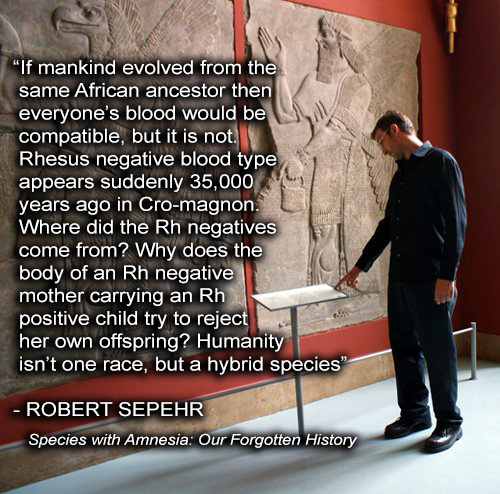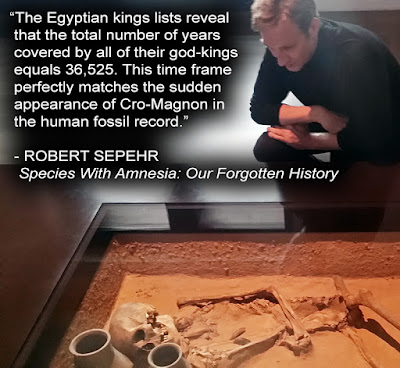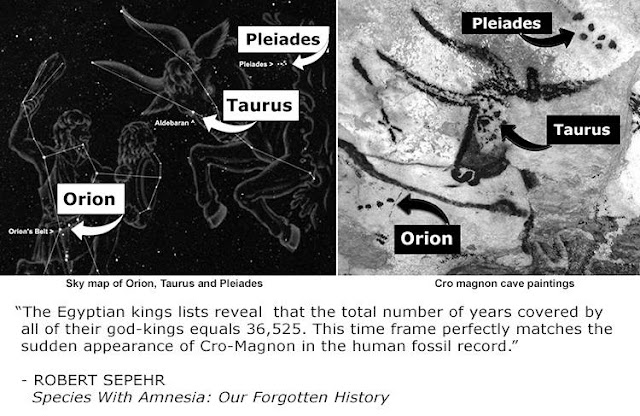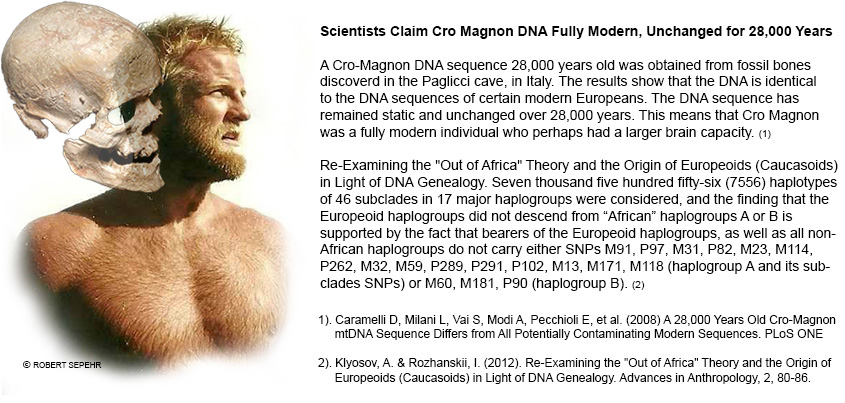-------------------------
Robert Sepehr
Anthropologist Challenges "Out of Africa" Theory of Human Origins
It is now scientifically irrefutable fact that the "human species" has been found to contain a substantial quantity of DNA (at least 20%) from other hominid populations not classified as Homo sapien; such as Neanderthal, Denisovan, African archaic, Homo erectus, and now possibly even "Hobbit" (Homo floresiensis).
If not given drugs to prevent infant death, the pregnant body of a rhesus negative mother will attack, try to reject, and even kill her own offspring if it is by a rhesus positive man.
The Domestic dog (Canis lupus familiaris) is a sub-species of the gray wolf (Canis lupus), and they produce hybrids. There are numerous other examples of where two separate species (for example with different numbers of chromosomes) can also produce viable offspring, yet are considered separate species. That said, humanity has been shown to be, genetically speaking, a hybrid species that did not all share the same ancestry in Africa.
Recent sequencing of ancient genomes suggests that cross-species interracial interbreeding went on between the members of several human-like groups more than 30,000 years ago, including an as-yet unknown human ancestor. "There were many hominid populations,” says Mark Thomas, evolutionary geneticist at University College London.
Recent genetic studies are touting shocking headlines about how ancient humans 'rampantly interbred' and indulged in inter-species interracial sex with multiple mystery sub-races in a "Lord Of The Rings"-style world of different creatures, including mystery DNA - neither human nor Neanderthal, not yet identified.
Scientific evidence refuting the theory of modern humanity’s African genesis is common knowledge among those familiar with the most recent scientific papers on the human Genome, Mitochondrial DNA and Y-chromosomes.
Regrettably, within mainstream press and academia circles, there seems to be a conspicuous – and dare we say it – deliberate vacuum when it comes to reporting news of these recent studies and their implications.
È ormai un fatto scientificamente inconfutabile che la "specie umana" contenga una quantità sostanziale di DNA (almeno il 20%) proveniente da altre popolazioni di ominidi non classificate come Homo sapiens; come l'uomo di Neanderthal, il Denisova, l'uomo arcaico africano, l'Homo erectus e ora forse anche l'"Hobbit" (Homo floresiensis).
Se non vengono somministrati farmaci per prevenire la morte infantile, il corpo gravido di una madre Rh negativa attaccherà, cercherà di rigettare e persino uccidere la propria prole se è di un uomo Rh positivo.
Il cane domestico (Canis lupus familiaris) è una sottospecie del lupo grigio (Canis lupus) e produce ibridi. Esistono numerosi altri esempi in cui due specie distinte (ad esempio con un diverso numero di cromosomi) possono produrre prole vitale, pur essendo considerate specie separate. Detto questo, è stato dimostrato che l'umanità è, geneticamente parlando, una specie ibrida che non condivideva tutte le origini africane.
Un recente sequenziamento di genomi antichi suggerisce che l'incrocio interrazziale tra specie diverse sia avvenuto tra i membri di diversi gruppi simili all'uomo più di 30.000 anni fa, incluso un antenato umano ancora sconosciuto. "Erano presenti numerose popolazioni di ominidi", afferma Mark Thomas, genetista evoluzionista presso l'University College di Londra.
Recenti studi genetici stanno pubblicando titoli scioccanti su come gli antichi umani si siano "ibridati in modo sfrenato" e si siano abbandonati a rapporti sessuali interrazziali tra specie diverse con molteplici sottorazze misteriose in un mondo in stile "Il Signore degli Anelli" popolato da creature diverse, tra cui un DNA misterioso, né umano né neanderthaliano, non ancora identificato.
Le prove scientifiche che confutano la teoria della genesi africana dell'umanità moderna sono di dominio pubblico tra coloro che hanno familiarità con i più recenti studi scientifici sul genoma umano, il DNA mitocondriale e i cromosomi Y.
Purtroppo, all'interno della stampa mainstream e degli ambienti accademici, sembra esserci un vuoto evidente – e osiamo dirlo – deliberato quando si tratta di riportare notizie su questi recenti studi e sulle loro implicazioni.

According to anthropologist Robert Sepehr, "the Egyptian kings lists reveal that the total number of years covered by all of their god-kings equals 36,525. This time frame perfectly matches the sudden appearance of Cro-Magnon in the human fossil record.” In his book, Species with Amnesia, he continues, "Manetho was an Egyptian historian and priest who lived during the Ptolemaic era, the 3rd century BC. He wrote the famous Aegyptiaca (History of Egypt), which is often used by us Anthropologists to identify the chronology of the reigns of pharaohs. His translation of the Egyptian king lists reveals that the total number of years covered by all the king-lists equals 36,525. According to the chronology of Manetho, about 36,525 years ago Gods on Earth began to rule Earth, lasting until about 22,625 years ago when Demigods succeeded them, until about 11,600 years ago when mortal humans began to rule until the present day. This time frame perfectly matches the period of Cro-Magnon man in the fossil record."
Secondo l'antropologo Robert Sepehr, "gli elenchi dei re egizi rivelano che il numero totale di anni coperti da tutti i loro re-dei è pari a 36.525.
Questo lasso di tempo corrisponde perfettamente alla comparsa improvvisa dell'uomo di Cro-Magnon nella documentazione fossile umana".
Nel suo libro, Specie con Amnesia, continua: "Manetone fu uno storico e sacerdote egizio vissuto durante l'era tolemaica, il III secolo a.C.
Scrisse la famosa Aegyptiaca (Storia d'Egitto), spesso utilizzata da noi antropologi per identificare la cronologia dei regni dei faraoni.
La sua traduzione delle liste dei re egiziani rivela che il numero totale di anni coperti da tutte le liste dei re è pari a 36.525.
Secondo la cronologia di Manetone, circa 36.525 anni fa gli Dei sulla Terra iniziarono a governare la Terra, durando fino a circa 22.625 anni fa, quando i semidei li sostituirono, fino a circa 11.600 anni fa, quando gli umani mortali iniziarono a governare fino ai giorni nostri.
Questo intervallo di tempo corrisponde perfettamente al periodo dell'uomo di Cro-Magnon nella documentazione fossile."
 http://atlanteangardens.blogspot.it/201 ... frica.html
http://atlanteangardens.blogspot.it/201 ... frica.html---------------------------





